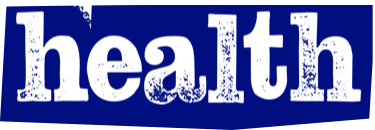
My daughter received an autism diagnosis just after she turned 4 years old. At the same time, the psychiatrist working with my daughter was very clear: He saw the same diagnostic traits in me that he saw in my daughter.
After discussing family history, my own childhood, and my reactions to my daughter’s behaviors, the doctor tossed his pen onto his desk, put his head in his hands, and said, “You know there are tests for this in adults, right?”
That had actually never occurred to me. I’d spent a year learning as much as I could about the world of autism advocacy when my daughter was diagnosed, changing our family’s world for the better, but I hadn’t shaken the stereotype that autism was a boy thing.
Of course, now, I know better. It took me a year to embrace my own semi-formal diagnosis and to realize that autism looks different in many femme people—girls, women, and people of non-binary genders (of which I am one) than it does in boys and men. We tend to shut down before we melt down when frustrated. Since children who are perceived as girls get much more intensive social training than boys, we may be better able to mask our struggles with socialization, at least when we’re younger. Our autism is frequently misdiagnosed as OCD, generalized anxiety disorder, or major depressive disorder. For many of us, those diagnoses are accurate (often because we had previously gone undiagnosed), but they don’t paint a full picture.
The stereotypical picture of diagnosable autism is of a young white boy from an affluent family. It allows for two different presentations: The “little professor” who seems emotionally distant, doesn’t understand humor or sarcasm, but is incredibly intelligent and speaks at great length about particular topics or the “Rain Man” savant, an intellectually disabled adult man who has one special talent or field of intelligence. If your autism doesn’t look like either of those, getting diagnosed is somewhere between difficult and impossible.
There’s no such thing as “girl autism.” Autism is a neurological disorder. It’s diagnosed through several criteria, such as sensory seeking behaviors, rigid adherence to routine, and difficulty with social interactions. This is true for people of all genders. While there are differences in how those factors present across genders, they are societal, not biological. Understanding that autistic traits are both universal and displayed differently is crucial to understanding how our needs and challenges are different from those of autistic boys and men.
It’s no secret that gendered language and behavior toward girls and boys is present from birth: Boys should be brave and strong, while girls should be sweet and polite. Boys are determined while girls are bossy. Sensitive boys are weak and need to toughen up while sensitive girls are in touch with their emotions—or just moody. Boys tend to focus their frustration outward, and their outbursts and anger will more easily attract positive attention; anxious little girls tend to be quiet and reserved, which can look polite and calm under casual observation, and outspoken behavior is corrected rather than examined.
I’m far from the only woman to be diagnosed—or to realize her own autism diagnosis—around the time her child was diagnosed. We often don’t recognize our kids’ autistic behaviors because they mirror our own. I didn’t realize that my youngest daughter never made eye contact—because I avoid eye contact as much as possible. And even if we do seek a diagnosis, we are often dismissed by the medical community.
Understanding that autistic traits are both universal and displayed differently is crucial to understanding how our needs and challenges are different from those of autistic boys and men.
There are some organizations within the world of autism advocacy that are working to change the conversation and make sure that women, girls, and non-binary individuals are included. ASAN, the Autism Self Advocacy Network, actively includes women and non-binary people on their boards and as speakers. While their goal is to assist all autistic people with self-advocacy, they actively include women in the conversation and support ethical research into adult needs. The Autism Women & Nonbinary Network works to create community and support for autistic women and non-binary people.
When the autism community ignores girls and women, they lose a larger understanding of what autism looks like. After all, it’s not just girls who get lost in the cracks. I have two male friends who received an alphabet soup of incorrect diagnoses by the time they were teens. If our understanding of autism was more nuanced, if we were looking for more than little professors and rain men, we could do a better job of getting all kids the help they need.
Girls need the same help with fine and gross motor skills, sensory integration, executive function strategies, and social learning that boys do. Because we don’t get diagnosed, even informally, we don’t get that. I did okay until I had kids. But then, my conversations with other moms were filled with awkward pauses where I knew just enough about the overwhelming rules of conversation to know that I’d said something wrong, but not enough to know what it was.
My gaps in executive function meant that I was always struggling to keep up with my family’s needs. I was always behind somewhere—something hadn’t gotten washed, or groceries hadn’t been purchased, or the car hadn’t received the necessary inspection. If I’d understood what I was dealing with, I could have adapted, instead of dismissing my struggles as typical “mom-exhaustion.” I could have focused on building one-on-one friendships instead of focusing on mom-and-baby groups. I could have found better strategies to support my poor executive functioning. Instead, the depression and anxiety that had been present since my early childhood spiraled into a dangerous mental health crisis. If we had been looking for more than little professors and rain men, I might have gotten the help I needed.
My daughter has a piece of paper that formalizes her Autistic Spectrum Disorder diagnosis. This gives her a roadmap for the scaffolding she’ll need in her personal development, and a virtual sworn affidavit to educators that her problems and her behaviors are legitimate. It took nearly 40 years of understanding myself and a year of navigating the medical system to get that same piece of paper—and three minutes to be told that the diagnostic process was just a formality.
“It’s obvious,” he said, “If you know what to look for.”


Grok Nation Comment Policy
We welcome thoughtful, grokky comments—keep your negativity and spam to yourself. Please read our Comment Policy before commenting.